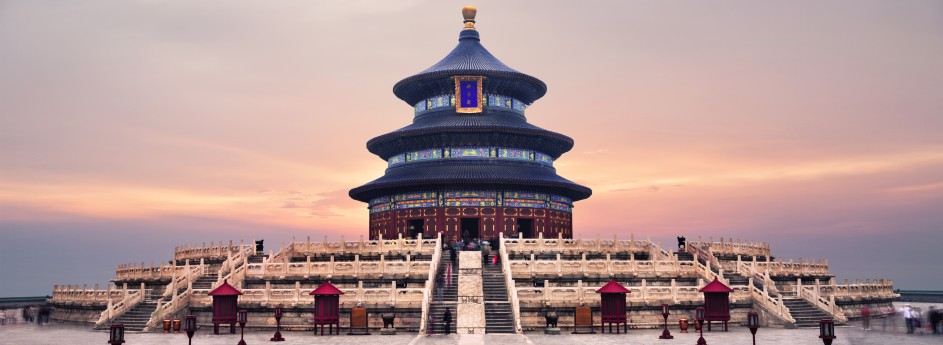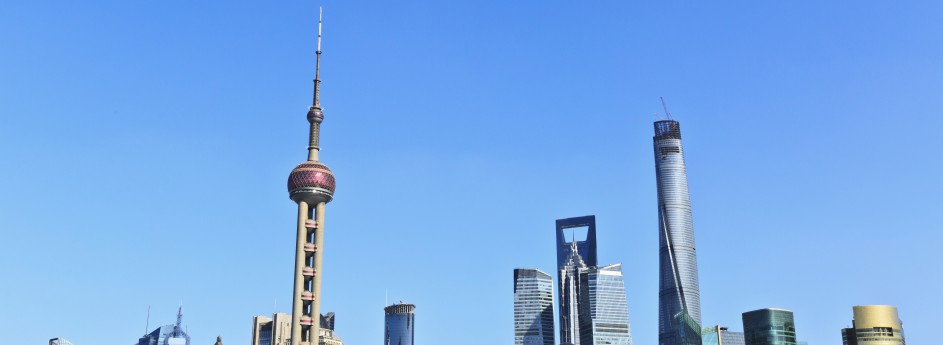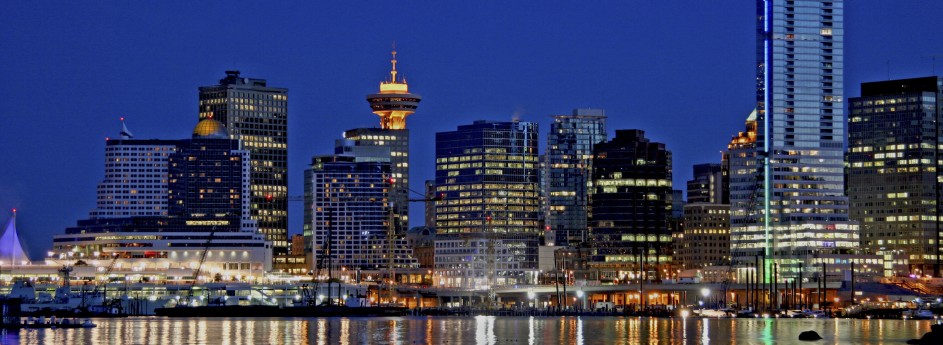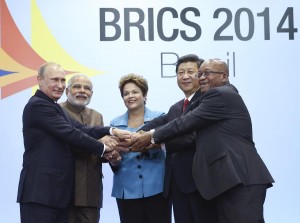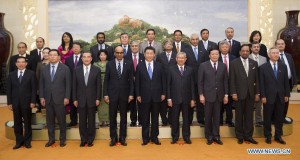North Korea’s Dependence on China is Absolute
North Korea depends on China for virtually everything and yet master clown and ingrate Kim Jung Un can thumb his nose at China without consequence. His latest snub is not inviting China to his father’s memorial which in feudal fashion is held three years after his death. Perhaps that’s a good thing.
This article most likely understates the extent of North Korea’s dependence. Last month, visiting the border city of Dandong that sits across the Yalu River from North Korea, on the only bridge open to traffic, in the morning one could see a continuous one-way flow of fully-packed trucks into the country with NONE coming in the opposite direction.
———-
North Korea’s economy is almost completely dependent on China. As North Korea has become increasingly cut off from the rest of the world, China has become its biggest trading partner.
Food and energy: China provides North Korea with most of its food and energy supplies, and accounts for 60% of the reclusive nation’s total trade.
Cheap labor: For its part, China seems to be interested in its neighbor’s natural resources and cheap labor.
Mining and commodities companies: There are about 200 Chinese companies in operation in North Korea, most of which are involved in mining and the production of commodities.
Because North Korea cannot finance its trade through borrowing, it has a $1.25 billion deficit with China, according to the Council of Foreign Relations. Beijing is also the largest foreign direct investor, according to the Korea Economic Institute of America.
– CNNMoney
A Friend in Need is a Friend Indeed
As the piece suggests, helping out Russia is entirely in China’s interests and would solidify its relationship with the energy powerhouse, not to mention adding to China’s rising reputation as a great power that strives to help others to maintain global economic and political stability.
———-
China offered enhanced economic ties with Russia at a regional summit this week as its northern neighbor struggled to contain a currency crisis.
“To help counteract an economic slowdown, China is ready to provide financial aid to develop cooperation,” Premier Li Keqiang said at a Dec. 15 gathering in Astana, Kazakhstan of the Shanghai Cooperation Organization. There Li met with Russian Prime Minister Dmitry Medvedev. While the remark applied to any of the five other nations represented at the meeting (the group includes Kazakhstan, Kyrgyzstan, Tajikistan and Uzbekistan along with Russia and China), it was directed at Russia, according to a person familiar with the matter who asked not to be named as the plans weren’t public.
Any rescue package for Russia would give China the opportunity of exercising great-power leadership — sustaining other economies with its superior financial resources. President Xi Jinping last month called for China to adopt “big-country diplomacy” as he laid out goals for elevating his nation’s status.
“If the Kremlin decides to seek assistance from Beijing, it’s very unlikely for the Xi leadership to turn it down,” said Cheng Yijun, senior researcher with the Institute of Russian, Eastern European, Central Asian Studies at the Chinese Academy of Social Sciences in Beijing. “This would be a perfect opportunity to demonstrate China is a friend indeed, and also its big power status.”
One-time Cold War ally China already proved a help to its neighbor embroiled in tensions with the U.S. and European Union earlier this year, signing a three-decade, $400 billion deal to buy Russian gas.
Seeking China’s support is one of Russia’s most realistic options, the state-run Chinese newspaper Global Times wrote in a Dec. 17 editorial. A decision on whether to use some of its windfall gains from falling oil prices to aid Russia would hinge on whether Putin’s government is willing to ask for assistance, said Cheng, who is also a research fellow at the Development Research Center, which is a unit of the State Council, or cabinet.
The two nations’ strategic partnership means that China would have to step in if the ruble crisis deepens, Cheng said.
While emerging markets facing such situations typically can turn to the International Monetary Fund for help, Russia’s impasse with Group of Seven nations over the situation in Ukraine may make it difficult to find loan conditions agreeable to all member countries, given that the U.S. and European nations dominate the Washington-based lender.
China has used $25 billion of its foreign-exchange reserves to support oil supply from a Sino-Russian pipeline, and another $67.3 billion to boost the supply of crude oil from Russia, according to a statement on the central Chinese government’s website posted this week. The statement didn’t specify what type of support was provided or a time frame for the help, other than saying it was since Li took office in March 2013.
China’s reserves — the world’s largest — stood at $3.89 trillion at the end of September. Russia had $373.7 billion at the end of last month, according to data compiled by Bloomberg.
Russia’s currency-swap deal with China is one potential avenue of help. The agreement on a three-year 150 billion yuan ($24 billion) local-currency swap was one of the accords reached between Putin and Xi in October.
China, the world’s largest oil importer, has emerged as one of the biggest winners from the slump in the fuel’s price that has hammered its northern neighbor. A 30 percent drop in the price of oil alone could add 0.3 to 0.5 percentage point to China’s growth, says Mizuho Bank Ltd.
– Bloomberg
China’s Multilateral Banks
I last posted last week on China’s frustrations with the current structure and lack of reform at US-led multilateral financial institutions, namely, the World Bank (WB), the International Monetary Fund (IMF), and the Asian Development Bank (ADB).
China’s deep dissatisfaction has lead to the formation, all within a year, of similar institutions, albeit on a smaller scale: the BRICS New development Bank (NDB), the Asian Infrastructure Investment Bank (AIIB), and a fund for projects along the land-based and maritime Silk Roads. All three institutions/funds are geared toward solving infrastructure and transport bottlenecks across Eurasia and a number of sub- regions.
Formed last July, the NDB, with initial capital of US$50 billion that will steadily increase to $100 billion, will be headquartered in Shanghai and authorized to lend up to $34 billion a year. The five BRICS countries will contribute $10 billion each toward initial capitalization, the first president will be an Indian, and South Africa will be the African headquarters of the bank. But, most important, in a break with WB structure which assigns votes according to capital share, each participant country is assigned one vote and no country holds veto power.
Created along with the NDB is the US$100 billion Contingent Reserve Arrangement (CRA) designed to provide protection against global liquidity pressures as well as assistance to non-BRICS countries facing severe monetary crises. Each member will contribute $2 billion toward “paid-in capital” but China will pump in the lion’s share ($41 billion) of the initial capital of $100 billion with Brazil, Russia, and India each giving $18 billion and South Africa taking up the rear with $5 billion. Slated to start lending in 2016, it is essentially an attempt by the BRICS to soften their dependence on the US Federal Reserve and the dominance of the US dollar.
Barry Eichengreen, a prominent political economist at the University of California, Berkeley, wrote in the Project Syndicate last summer the NDB makes a lot of sense for the BRICS and has a good chance of survival, especially given the critical need for infrastructure and other investment across the BRICS. However, the CRA is another matter. Faced with a BRICS country experiencing a major crisis, such as Russia right now with its plummeting ruble, to draw largely on the fund, the other BRICS would most certainly balk at lending large sums to that country, Prof. Eichengreen suggested.
In addition, it would be hard to impose conditionalities on such a large and proud country as Mother Russia. And attempts to establish swap lines and credits such as under the Chiang Mai Initiative in the wake of the 1997 Asian Financial Crisis, would be equally hard to implement. In this connection, it is a stroke of luck for the NDB that the ruble took a nose dive at this point in global monetary history as opposed to post 2016 when the NDB actually starts lending. In any case, the ruble debacle shines a big red light on management and lending prudence of the NDB.
As with the NDB, the AIIB was initially brought up by China’s President Xi Jinping a little over a year ago, in large part due to the country’s discontent with existing institutions. In terms of Asia’s developmental needs, the ADB itself estimates a whopping US$8 trillion is needed for national infrastructures and another $290 billion for regional infrastructure through 2020 to sustain Asia’s growth. Currently, the ADB finances less than 2% of Asia’s needs so any help the AIIB can provide would be greatly welcomed across the continent.
Last June, China proposed a doubling of registered capital to US$100 billion and asked India to join as a founding member. Eventually, 21 countries, including staunch US allies like the Philippines, signed on to the founding document with Australia and South Korea demurring due to US pressure. A little while later, following a visit by Chinese Foreign Minister Wang Yi, Indonesia, the largest economy in ASEAN, decided to get on board. Australia indicated it would still be interested in joining if certain transparency and governance issues were addressed as did South Korea. The next step is to negotiate the bank’s articles of agreement, expected to be completed by the end of next year.
WB President Jim Yong Kim said he welcomed the activities of new organizations like the AIIB because of Asia’s pressing needs and ADB President Takehiko Nakao said his bank is prepared to work with the AIIB. Not surprisingly, the big party-pooper remaining is the Obama Administration’s State Department which questioned the banks’ standards based on safeguards and accountability issues. Kenneth Lieberthal, a renowned China expert at the Brookings Institution and former advisor to President Bill Clinton recommended strongly for the US to get involved or risk appearing intransigent.
Speaking to the VOA, he counseled, “I think we actually ought to get engaged with this, becoming a part of it, and try to, through that engagement, both show the Chinese that we are prepared to accept a greater role for them in areas where they are contributing to public goods and we want to work with them to have the standards that are necessary to sustain the way the international system now functions.”
Similarly at the behest of President Xi, in November, China announced a fund to finance infrastructure projects along both land-based and maritime Silk Road routes. Capitalized at $16.3 billion to gradually expand to $50 billion without a cap, the fund will be backed by the People’s Bank of China (China’s central bank), the Ministry of Finance, and the country’s development banks. More than half of the fund will come from China’s foreign exchange reserves which at last count had topped $3.88 trillion. Financing will be limited to Central Asia, the Middle East, South Asia, Southeast Asia, and southeast and eastern Europe. Xi has asked for the expedition of a detailed timetable, road map, and list of initial projects.
Finally, last May, a public-private consortium involving the city of Fuzhou in east coast Fujian province, the Fujian branch of the China Development Bank, and the China-Africa Development (private equity) Fund (CAD Fund) signed a MOU to set up a $1.6 billion fund to support such projects as marine aquaculture farms and industrial parks in ASEAN countries as part of development along the traditional maritime Silk Road route stretching through the Strait of Malacca to the Horn of Africa and eventually to the Red Sea and Mediterranean.
In setting up these institutions and funds, China has morphed from importer of capital to major exporter geared toward the massive building of infrastructure across Asia and the world.

